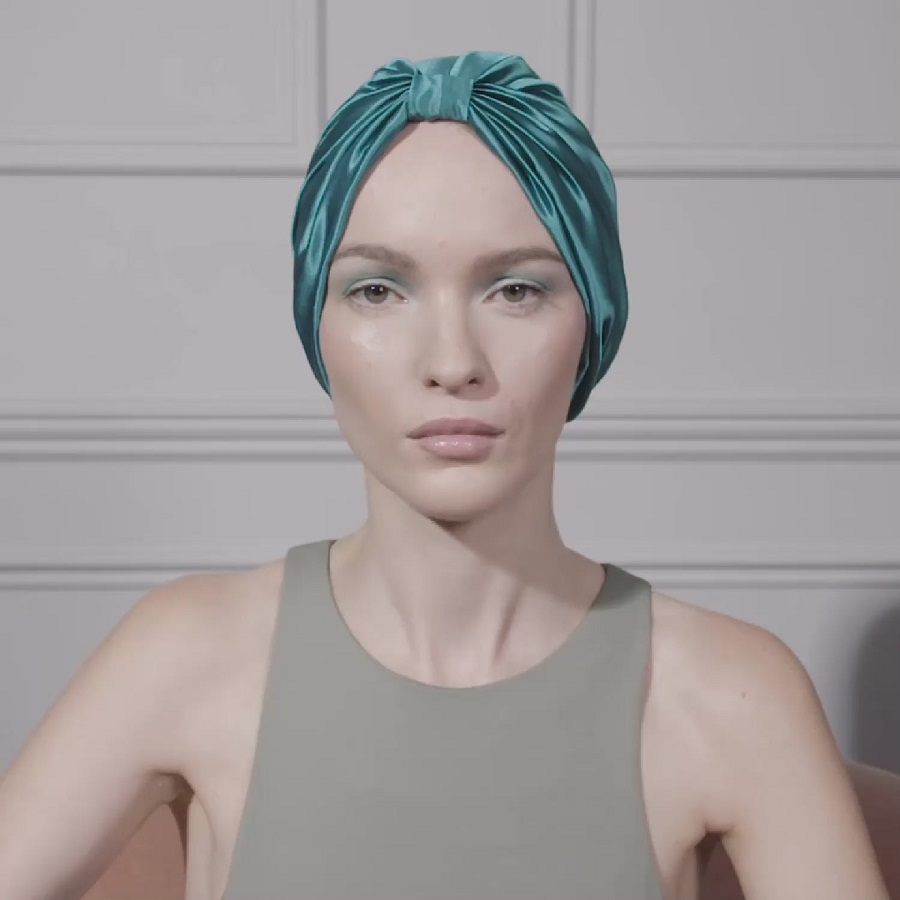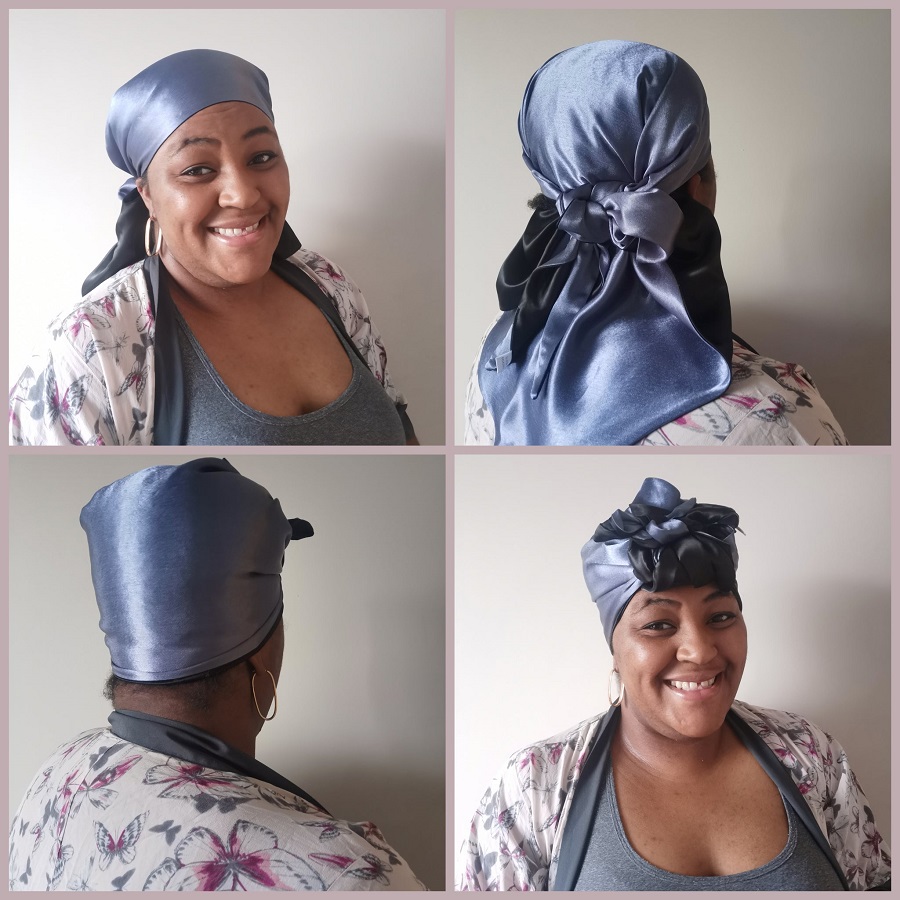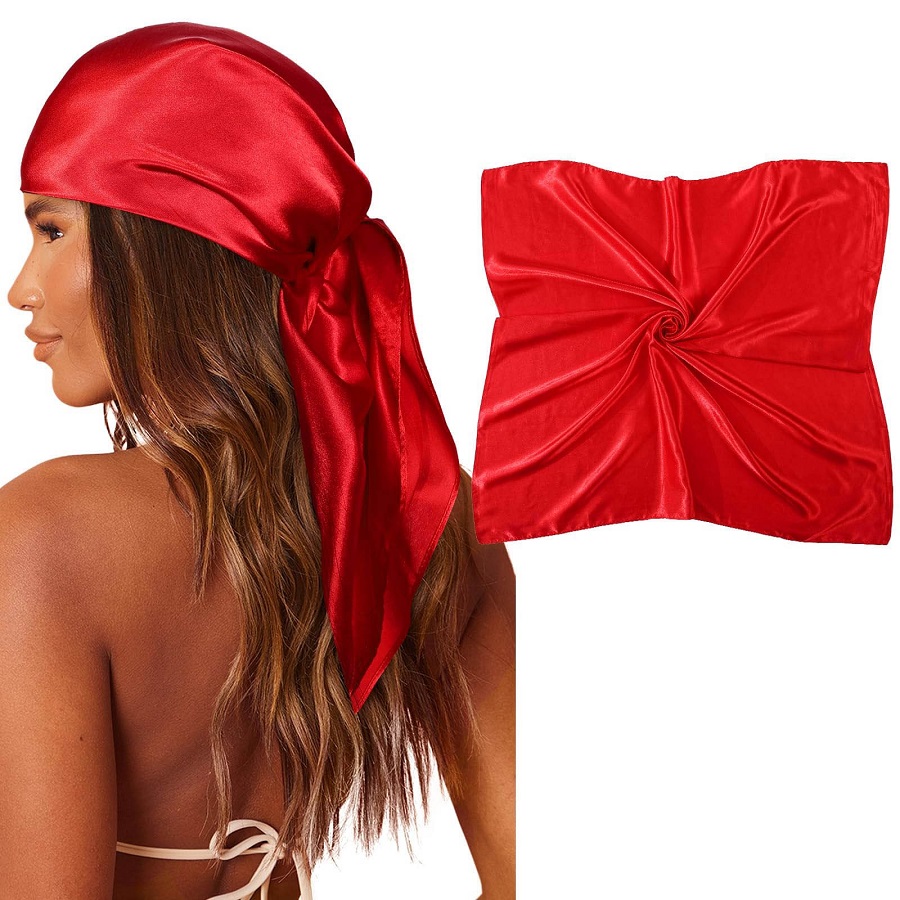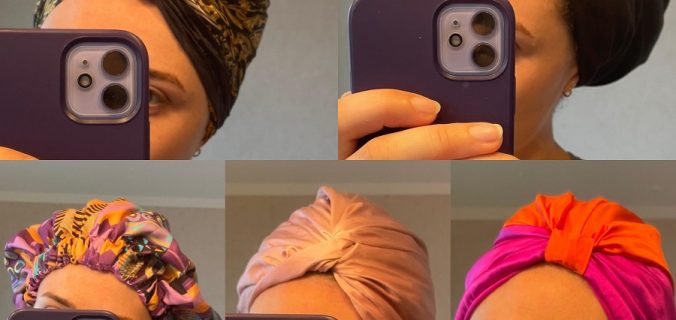Introduction
Hair scarf for sleeping – When it comes to protecting your hair while you sleep, a hair scarf can be your best friend. Not only do they help to maintain your hairstyle, but they also protect your hair from damage caused by friction against your pillow, moisture loss, and environmental factors. With so many options available, finding the perfect hair scarf can feel overwhelming. This comprehensive guide will help you navigate the essentials in choosing a hair scarf that suits your needs, preferences, and hair type.

Understanding the Benefits of Using a Hair Scarf
Before diving into the choices available, let’s explore the key benefits of using a hair scarf for sleep:
- Protection Against Friction: As you move during sleep, your hair rubs against your pillowcase. This friction can lead to tangling, frizz, and breakage. A hair scarf creates a protective barrier, reducing wear and tear.
- Moisture Retention: Hair can lose moisture overnight, leading to dryness and split ends. A scarf helps to seal in moisture and can be especially beneficial for textured or curly hair.
- Preserving Hairstyles: If you’ve styled your hair, a scarf can help maintain your look overnight, allowing you to wake up with your hairstyle intact.
- Preventing Hair Loss: For individuals with longer or thicker hair, keeping your hair neatly secured can prevent unnecessary hair pulling and shedding.
- Versatile Use: Hair scarves are not exclusively for sleep; they can be worn during the day, too, providing style and functionality.
Fabric Considerations
The first step in choosing a hair scarf is to consider the fabric. What material will best suit your hair type and sleeping habits?
Silk
Silk scarves are luxurious and gentle on hair, reducing friction and minimizing frizz. helps maintain moisture levels, making it ideal for dry or damaged hair. A disadvantage is that silk can be slippery, so it may require some tying techniques to keep it in place.
Satin
Satin scarves serve a similar purpose to silk but are often more affordable. They also reduce friction and help retain moisture. The primary difference is that satin can be more durable and easier to care for than 100% silk.
Cotton
Cotton is breathable and easy to find, but it tends to absorb moisture rather than retain it, which can lead to dryness. If you opt for cotton, consider using it with a leave-in conditioner or oil to nourish your hair overnight.
Bamboo/Modal
Bamboo or modal fabrics are soft and breathable alternatives to traditional materials. They can be more absorbent than silk or satin but still provide a good level of protection. These fabrics are often hypoallergenic, making them suitable for sensitive skin.
Size and Shape
When choosing a hair scarf, the size and shape can significantly affect its functionality.
Square Scarves
Square scarves (often around 20 to 36 inches) can be folded and tied in various styles. They’re versatile and can be adapted depending on your hairstyle. A larger square may offer more coverage for longer hair.
Rectangular Scarves
Rectangular scarves allow for easy wrapping around the head. They are great for tying styles and can accommodate bulkier hairstyles.
Pre-tied or Bonnet Styles
These styles come with an elastic band for easy application. They’re great for quick use, particularly if you struggle with tying techniques or need something functional yet stylish.
Tying Techniques
Learning how to tie your hair scarf can enhance its effectiveness. Here are a few popular techniques:
The Classic Tie
- Place the scarf under your hair, gather your hair on top, and bring the ends up and over.
- Tie a knot or bow at the front or back, depending on preference.
The Turban Wrap
- Fold the scarf into a triangle and place the longest edge at your forehead.
- Gather your hair and twist it upwards, wrapping it with the scarf towards the back.
- Tuck any loose ends and secure them.
The Bun Method
- Place the scarf around the base of your ponytail or bun.
- Tie it in a secure knot to hold the hair in place.
Hair Type Considerations
Different hair types benefit from different scarf styles and materials:
- Curly or Coily Hair: Opt for satin or silk scarves that can hold moisture and prevent frizz. Scarves that allow for comfortable wrapping without excessive tension will be beneficial.
- Straight or Wavy Hair: Silk or satin scarves are ideal for reducing friction. You can also experiment with different tying techniques to suit your style.
- Fine or Thinning Hair: Lightweight fabrics like satin are ideal, as they minimize tension on the scalp. Avoid overly heavy scarves which might weigh down your hair or pull at the roots.
Style and Personal Preference
Beyond functionality, your hair scarf should reflect your personal style. Here are some tips to consider:
- Colors and Patterns: Choose colors that suit your aesthetic. Classic black, vibrant prints, or minimalist designs can all add flair to your bedtime routine.
- Brand Considerations: Look for brands that focus on high-quality materials and ethical production. This can often ensure better longevity and effectiveness.
Care and Maintenance
To ensure the longevity of your hair scarf:
- Read Care Labels: Follow specific wash instructions, particularly for silk and satin, which may require delicate treatment.
- Gentle Washing: Hand wash whenever possible, using mild detergents.
- Store Properly: Keep your scarf in a clean, dry place, away from direct sunlight, to prevent fading.

The Importance of a Good Night’s Sleep
Before diving into the specifics of hair scarves, it’s important to understand the role of sleep in beauty care. Quality sleep allows your body to repair and regenerate, affecting everything from skin health to hair vitality. Poor sleep can lead to dull skin, brittle hair, and a host of other beauty problems. By improving your bedtime routine, you can wake up looking and feeling refreshed.
The Beauty Benefits of Hair Scarves
Protection from Friction
While you sleep, your hair rubs against the pillowcase, resulting in friction that can lead to breakage, split ends, and frizz. A hair scarf acts as a protective barrier between your hair and the pillow, helping maintain its integrity overnight. This is especially beneficial for people with curly or textured hair, which is often more prone to damage.
Retaining Moisture
Many hair types benefit from moisture, especially if they tend to be dry or damaged. A hair scarf can help lock in moisture, thanks to its fabric that doesn’t absorb humidity like cotton does. When you wear a scarf, it creates a microclimate around your hair that helps keep it hydrated. Consider using a silk or satin scarf for optimal moisture retention.
Reducing Frizz
Tired of waking up to a frizz-ball of hair? A hair scarf can significantly reduce morning frizz by keeping your strands in place and preventing them from rubbing against a rough pillow. Both silk and satin are smoother than regular fabric, which means less friction and, consequently, less frizz.
Preserving Styles
If you’ve invested time and product into styling your hair, you’ll want that style to last. Wearing a scarf can protect your carefully curated hairstyle from getting flattened or tousled throughout the night. Whether you’ve set curls with a curling iron or simply want to keep your straightened locks intact, a hair scarf can help maintain your look until morning.
Adding a Touch of Glamour
A hair scarf can be an easy way to add a touch of style to your nightwear. Available in a variety of colors and patterns, they can express your personality and elevate your bedtime aesthetic. Who says you can’t look chic while heading to bed? With the right hair scarf, you can feel a little glamorous, even in your pajamas.
Choosing the Right Hair Scarf
Now that you’re convinced of the benefits, let’s talk about how to choose the ideal hair scarf for sleep:
Material Matters
- Silk: Known for its luxurious feel and smooth texture, silk is excellent for retaining moisture and minimizing frizz. It’s an ideal choice for those with curly or coarse hair.
- Satin: If silk is out of your budget, satin is a great alternative that provides similar benefits at a lower price point.
- Cotton: While it’s a common choice for scarves, cotton tends to absorb moisture and can lead to dryness. It’s better suited for daytime use.
Size and Style
- Choose a scarf that is large enough to comfortably wrap around your hair without being overly tight. A square scarf or a long rectangular one can work well.
- Experiment with different styles, such as tying it into a turban, wrapping it around a bun, or simply letting it sit over your hair.

Conclusion
Choosing the perfect hair scarf for sleep involves considering various factors including fabric, size, tying techniques, and personal style preferences. By understanding these elements and implementing them effectively, you can protect your hair, preserve your hairstyles, and promote healthier hair practices.
Investing in a high-quality hair scarf can enhance your nighttime routine, making sleep more restorative both for you and your hair. Take your time to explore options and find the scarf that makes you feel good from the inside out—because quality sleep and beautiful hair go hand in hand!
